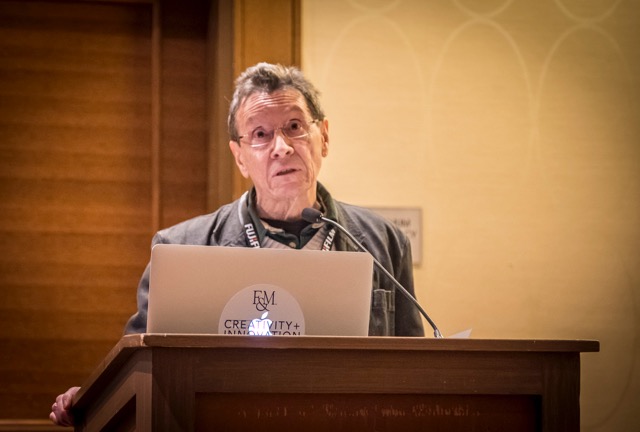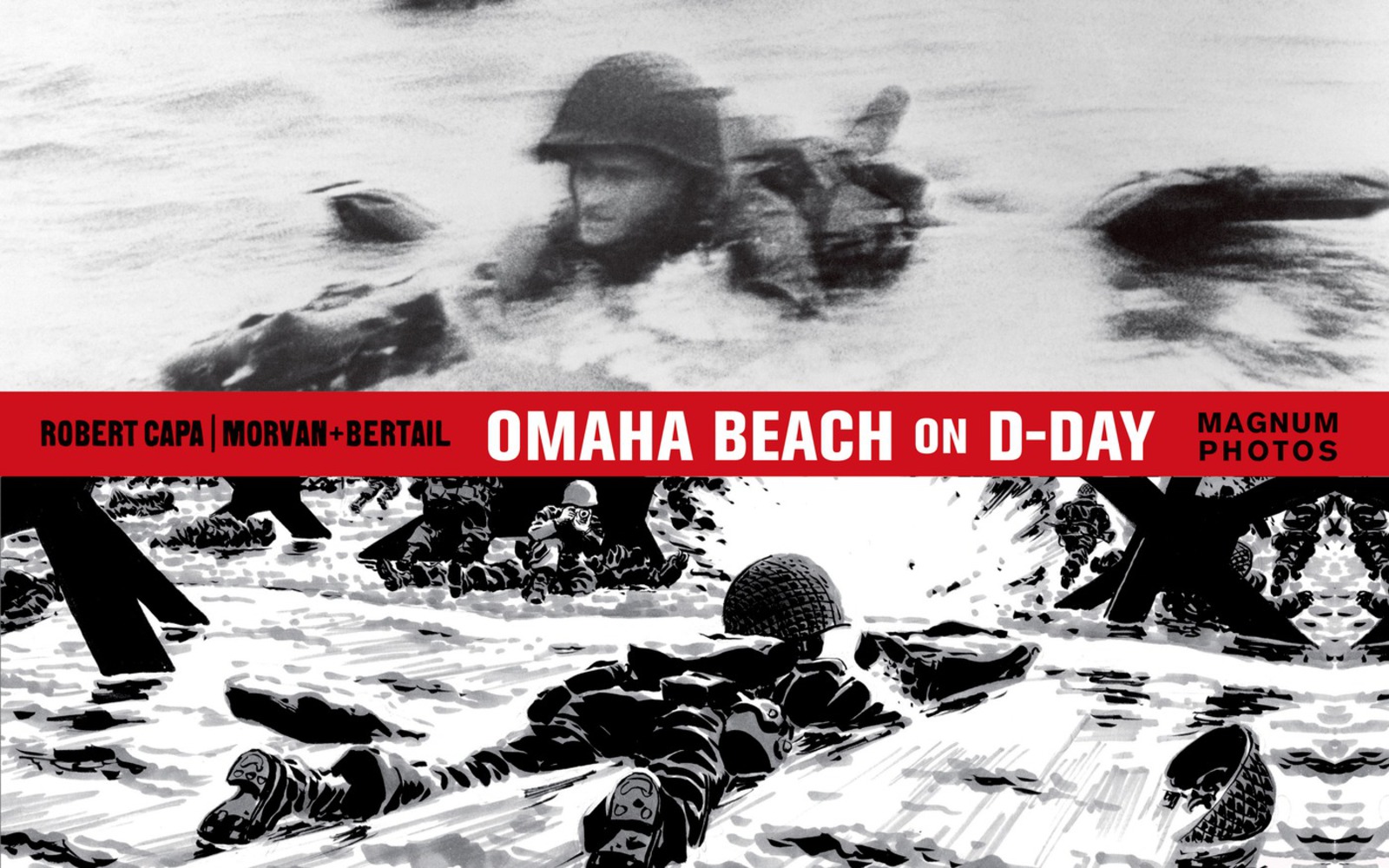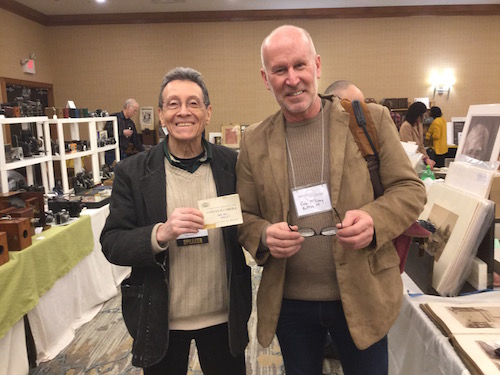 The 74th anniversary of D-Day came and went recently, with comparatively little notice (for an exception, see below). Including from this quarter, where we observe the cultural standard that says the anniversary before a really big one really doesn’t count for much.
The 74th anniversary of D-Day came and went recently, with comparatively little notice (for an exception, see below). Including from this quarter, where we observe the cultural standard that says the anniversary before a really big one really doesn’t count for much.
So now we head toward the 75th, June 6, 2019, likely to manifest itself as the largest in many years, while, statistically, probably the last major milestone to have any survivors in attendance. Though with the giant strides made regularly nowadays by modern medicine (think Theranos), anything seems possible.
•
With the first phase of this investigation now concluded, the second phase — consolidation and distillation of the results to date — has gotten underway.
 This has included public presentations summarizing the research, the first of which took place at the Society for Photographic Education 2018 National Conference in Philadelphia on Friday, March 2. Titled “Deconstructing Robert Capa’s D-Day: The Unmaking of a Myth,” it consisted of a 45-minute talk, accompanied by a Keynote presentation. I could easily have gone on for twice as long; indeed, at this point I can go on about this for days, probably even in my sleep. But I managed to condense the core material so that it fit within that time frame, in such a way that (according to attendees who spoke with me afterward) the central issues came clear and the visual evidence supported it.
This has included public presentations summarizing the research, the first of which took place at the Society for Photographic Education 2018 National Conference in Philadelphia on Friday, March 2. Titled “Deconstructing Robert Capa’s D-Day: The Unmaking of a Myth,” it consisted of a 45-minute talk, accompanied by a Keynote presentation. I could easily have gone on for twice as long; indeed, at this point I can go on about this for days, probably even in my sleep. But I managed to condense the core material so that it fit within that time frame, in such a way that (according to attendees who spoke with me afterward) the central issues came clear and the visual evidence supported it.
I videotaped that presentation on an iPad borrowed from my colleague Harris Fogel, and will eventually upload that recording to my YouTube channel.

A. D. Coleman, Capa D-Day lecture, SPE Conference, Philadelphia, 3-2-18. Photo © Charles Mintz.
I addressed this material again on Saturday, April 21 at the Photo History / Photo Future Conference (hosted by the Rochester Institute of Technology), which its organizers subtitled “A Three-day Conference on the Archaeology & Future of Photography.” Along with Frank Cost of RIT and Kristen Watson from Pratt Institute in NYC, I took part in what the conference organizers called a “panel” titled “On and Above the Ground,” which actually consisted of three autonomous and minimally related presentations.
 This required me to pare the already bare-bones talk (with the same title) and its accompanying slideshow down by half, to just a little over 20 minutes. This went beyond cutting to the bone — more like seeing how many ribs you can omit from a skeleton while still indicating a chest cavity. Still, I find that every variation on this project that I undertake teaches me something new about the effective ways of telling this story.
This required me to pare the already bare-bones talk (with the same title) and its accompanying slideshow down by half, to just a little over 20 minutes. This went beyond cutting to the bone — more like seeing how many ribs you can omit from a skeleton while still indicating a chest cavity. Still, I find that every variation on this project that I undertake teaches me something new about the effective ways of telling this story.
Both presentations played to packed houses, and those who attended the second and spoke to me later indicated that at least the gist of the project came through. And of course anyone interested in fleshing that out can go to the online archive of the relevant posts.
As a bonus for making the trip to Rochester, I got to meet in person — at long last — photographer and photo-historian Rob McElroy, who made notable contributions to the Capa D-Day Project. (The project’s team — in addition to McElroy, it includes photojournalist J. Ross Baughman and combat veteran and military historian Charles Herrick — collaborated via email, phone, and occasional FaceTime/Skype sessions.) Rob, present during this talk, got a shout-out from me during the lecture, and we hung out for awhile that day and the next.
Note: I’m available to give such presentations, as well as to conduct a seminar on our research methods, at appropriate venues. Email me for details.
•
 On May 14, 2018 the website 10 Frames Per Second published a podcast based on an interview with me conducted a month earlier by Joe Giordano and Elena Volkova, the program’s hosts. 10fps describes itself as “A podcast about photojournalism, with photojournalists, for everyone.” They titled this episode, their 35th, “A.D. Coleman and the Myth of Robert Capa.” It runs slightly over an hour. So you can listen to it online and/or download it for future enjoyment.
On May 14, 2018 the website 10 Frames Per Second published a podcast based on an interview with me conducted a month earlier by Joe Giordano and Elena Volkova, the program’s hosts. 10fps describes itself as “A podcast about photojournalism, with photojournalists, for everyone.” They titled this episode, their 35th, “A.D. Coleman and the Myth of Robert Capa.” It runs slightly over an hour. So you can listen to it online and/or download it for future enjoyment.
•
Since you asked, the third phase of this project will take me to the International Center of Photography’s Robert Capa and Cornell Capa Archive, now located at MANA Contemporary in Jersey City. Sometime toward the end of this year the papers of Cornell Capa and Richard Whelan, along with the Capa-related interviews conducted in the early 1960s by Jozefa Stuart, should finally all become available for research. I plan to delve into those to see what I can learn about the evolution and active dissemination of the D-Day myth.
I may also hie myself to the John Morris archive at the University of Chicago, his alma mater, to examine his correspondence and other papers relating to Robert Capa and the D-Day myth.
Finally, if I can find some way to access the Life magazine files for the D-Day issue and a few subsequent related issues, I will certainly take that opportunity to examine layouts, caption sheets, and other relevant materials.
Capa D-Day Project Exhibition
The touring exhibition that I have curated based on this project, “Robert Capa on D-Day: Unmaking a Myth,” will have its premiere at the May Gallery, Webster University, St. Louis, MO, running November 2-30, 2018. I’ll give a talk at 3 p.m. on Friday, November 2 (in Sverdrup 123), followed by an opening reception from 5-7 p.m. that same day. If you’re in the area, put it on your calendar.
(The show is available for rent at appropriate venues. Email me for details.)
This is Why We Can’t Have Serious Criticism
On June 6, 2018, the aptly named website Artsy.net published “Photographer Robert Capa Risked It All to Capture D-Day — then Nearly All His Images Were Lost,” by Haley Weiss, under its “Visual Culture” rubric.
It consists, in its entirety, of a rehash of the Capa D-Day myth, simply rewritten from one or more of the standard versions that our research project has thoroughly refuted. Which clearly shows the extent of the research Weiss conducted in producing this error-strewn, heavily fictionalized silliness.
 According to her own website, “Haley Weiss is a freelance writer, editor, and producer based in Brooklyn. Her writing has appeared in Interview, Cultured, and Artsy, among others. She’s the Deputy Editor of the non-profit publication Newest York, and previously served as Interview‘s online art and music editor.”
According to her own website, “Haley Weiss is a freelance writer, editor, and producer based in Brooklyn. Her writing has appeared in Interview, Cultured, and Artsy, among others. She’s the Deputy Editor of the non-profit publication Newest York, and previously served as Interview‘s online art and music editor.”
This is why we can’t have serious criticism today — pap like Weiss’s has overwhelmed and displaced it. It’s the cultural version of Gresham’s law in economics, according to which “bad money drives out good.” In the realm of criticism, bad writing drives out good. The jejune, superficial blather of a twit like Weiss represents exactly the sort of fluff that passes today for “cultural journalism” and/or “art writing” — naïve, poorly researched, unsourced, uncritical regurgitation of received ideas and (mis)information that have passed through the author like shit through the proverbial goose.
Of course, Weiss isn’t the only lazy writer to exhibit such carelessness. A year ago I caught Geoff Dyer doing the same thing in the pages of the New York Times. But at least Dyer simply summed up the myth in a sentence, instead of reiterating it at length. And, once I notified the NYT of this error, they forced Dyer to rewrite that passage and acknowledged the change in an editor’s note. But that’s the Times, still old-school after all these years. I don’t expect such integrity from Artsy, nor from Weiss.
 And Artsy, her outlet for this example of pseudo-journalism, makes its money selling art and celebrating the art market. Not a likely source of anything resembling serious criticism, nor a platform attractive to any writer thereof. Yet it survives and thrives while other, more serious online publications struggle and succumb — Gresham’s law at work again. (For a charmingly readable yet heavily theorized — and ultimately terrifying — analysis of Artsy’s umbilical relationship to the art market, the art world, and contemporary culture, see “Genetic Drift: Artsy and the Future of Art” by João Enxuto and Erica Love, published in Winter 2015 at X-TRA Contemporary Art Quarterly.
And Artsy, her outlet for this example of pseudo-journalism, makes its money selling art and celebrating the art market. Not a likely source of anything resembling serious criticism, nor a platform attractive to any writer thereof. Yet it survives and thrives while other, more serious online publications struggle and succumb — Gresham’s law at work again. (For a charmingly readable yet heavily theorized — and ultimately terrifying — analysis of Artsy’s umbilical relationship to the art market, the art world, and contemporary culture, see “Genetic Drift: Artsy and the Future of Art” by João Enxuto and Erica Love, published in Winter 2015 at X-TRA Contemporary Art Quarterly.
(Thanks, and a tip of the Coleman hat, to subscriber Andrew Eskind for bringing this to my attention.)
•
Thanks too to reader Michael Rosen, who sent the Charles Schulz “Peanuts” cartoon of Snoopy imagining himself as “The Face in the Surf,” from the June 6, 2018 San Francisco Chronicle:
It’s a theme to which Schulz returned several times during his life. “Sparky,” as his friends called, served on a national D-Day commemoration committee. My exhibition includes one of his business cards for that commitment.
•
Patrick Peccatte, whose thoughtful summary of this project sent it viral in France in mid-2015, subsequently requested and received permission to translate and publish “Guest Post 24: Charles Herrick on Capa’s D-Day (f),” which appeared here at Photocritic International on May 17, 2017. In it Herrick examines color film footage by U.S. Coast Guard cinematographer David T. Ruley. Stationed aboard LCI(L)–94, which arrived at Easy Red around the same time Capa did, and in the same area, Ruley filmed the same scene Capa did, though from a different angle, and also briefly filmed Capa himself after he boarded this vessel to make his departure from the beach. You’ll find Peccatte’s excellent translation into French here.
•
Also in French: Audrey Leblanc’s “Polémique sur Capa: Le Business Comme Tabou du Photojournalisme,” which appeared in the October 2015 issue of the French magazine Réponses Photo. (Clicking on the link above will download a pdf file thereof.)
![]() Leblanc managed to look beyond the controversy that this project evoked pro and con Capa, to its underlying issue: photojournalism’s inevitable, inextricable involvement in an assortment of corporate enterprises, and the imperative of moving past the myth of the heroic lone photographer (as epitomized by Capa) to an analysis of the economic and social forces that shape what finally appears on the printed page.
Leblanc managed to look beyond the controversy that this project evoked pro and con Capa, to its underlying issue: photojournalism’s inevitable, inextricable involvement in an assortment of corporate enterprises, and the imperative of moving past the myth of the heroic lone photographer (as epitomized by Capa) to an analysis of the economic and social forces that shape what finally appears on the printed page.
•
In “Bisogna distruggere i miti? Capa a Omaha Beach,” the Italian critic and cultural journalist Michele Smargiassi takes a similar approach. Smargiassi, who wrote about our project when it gained attention in summer 2015, returns to it here in discussing the Italian publication of a graphic novel about Capa’s D-Day adventures and the fate of his film.

Jean-David Morvan and Séverine Tréfouël, “Omaha Beach on D-Day” (2015), cover
This is the book whose English-language translation from the original French was published in October 2015: Omaha Beach on D-Day: June 6, 1944 with One of the World’s Iconic Photographers, written by Jean-David Morvan and Séverine Tréfouël, with illustrations by Dominique Bertail and photographs by Robert Capa (Macmillan). Smargiassi published this at his blog within the online edition of the newspaper Repubblica on June 30, 2017. (Click here for a rough Google translation of her article.) He uses this comic’s reiteration of the D-Day myth as a jumping-off point for discussion of the myth and its larger implications.
The book he reviews was originally published in French in spring 2014, before our project began, so it doesn’t reflect or respond to our research.
•
(For an index of links to all posts in this series, click here.)
•
 Special offer: If you want me to either continue pursuing a particular subject or give you a break and (for one post) write on a topic — my choice — other than the current main story, make a donation of $50 via the PayPal widget below, indicating your preference in a note accompanying your donation. I’ll credit you as that new post’s sponsor, and link to a website of your choosing. Include a note with your snail-mail address (or email it to me separately) for a free signed copy of my 1995 book Critical Focus!
Special offer: If you want me to either continue pursuing a particular subject or give you a break and (for one post) write on a topic — my choice — other than the current main story, make a donation of $50 via the PayPal widget below, indicating your preference in a note accompanying your donation. I’ll credit you as that new post’s sponsor, and link to a website of your choosing. Include a note with your snail-mail address (or email it to me separately) for a free signed copy of my 1995 book Critical Focus!
 But wait! There’s more! Donate now and I’ll include a copy of The Silent Strength of Liu Xia, the catalog of the 2012-13 touring exhibition of photos by the dissident Chinese photographer, artist, and poet, currently in her sixth year of extralegal house arrest in Beijing. The only publication of her photographic work, it includes all 26 images in the exhibition, plus another 14 from the same series, along with essays by Guy Sorman, Andrew Nathan, and Cui Weiping, professor at the Beijing Film Academy.
But wait! There’s more! Donate now and I’ll include a copy of The Silent Strength of Liu Xia, the catalog of the 2012-13 touring exhibition of photos by the dissident Chinese photographer, artist, and poet, currently in her sixth year of extralegal house arrest in Beijing. The only publication of her photographic work, it includes all 26 images in the exhibition, plus another 14 from the same series, along with essays by Guy Sorman, Andrew Nathan, and Cui Weiping, professor at the Beijing Film Academy.








Dear ADC,
First of all kudos for all the work on the Capa on D-Day project. Wonderful, insightful, convincing research work.
I’m writing just to let you know that “Michele Smargiassi,” the Italian photography critic that you mention [in this post], is a man, not a woman, but you use feminine pronouns to refer to him.
I believe the name may have confused you: Michele is a male name in Italian. You can easily find pictures of him online.
Best,
Matteo Riondato
Color my face red. I’m familiar with the French Michel (masculine) and Michelle (feminine), and did assume that in Italian Michele stood for the latter, not the former. My bad. And my apologies to M. Smargiassi.
Thanks for pointing out this error (which I’ve corrected in the post itself), and thanks also for your good words about the Capa D-Day project.